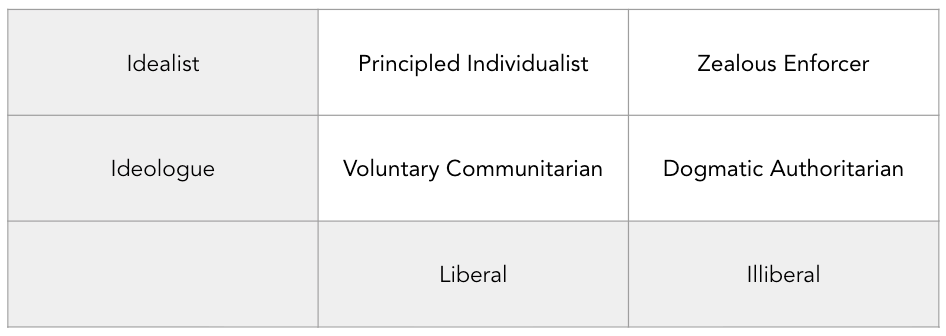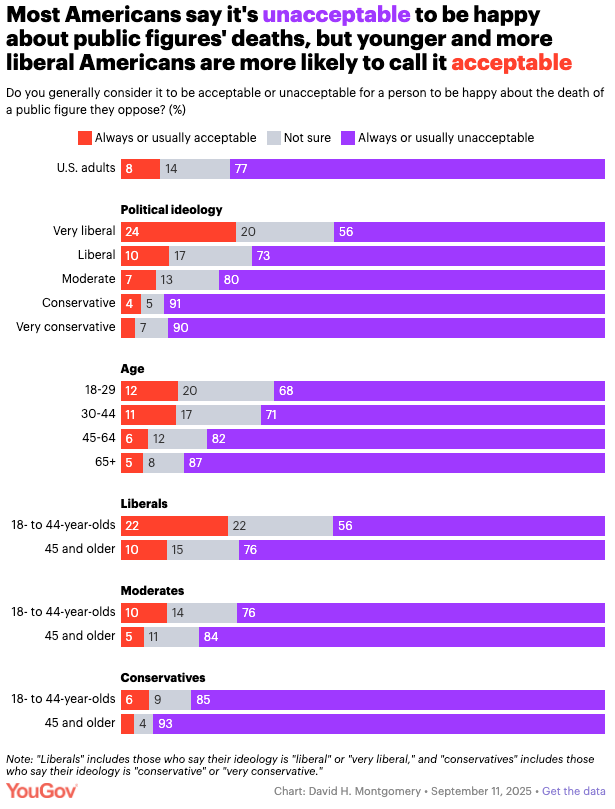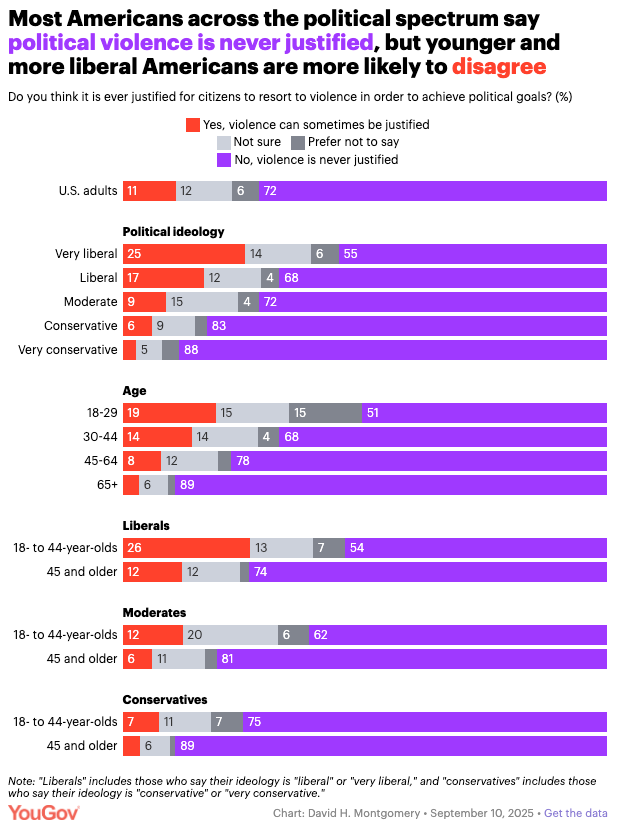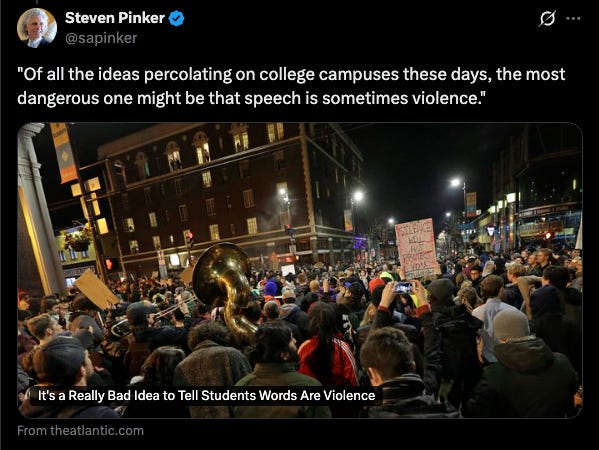The Violence Threat Matrix
Plus the world's smallest self-test to determine your willingness to live, die, kill, or lie for your worldview.
Who’s on your side? In terms of politics, the answer, for the most part, has to do with whether people are on the left or right. Increasingly, though, we have to ask whether and how one is willing to use violence.
But let’s not get ahead of ourselves.
Idealism and Ideology
If idealism can be defined as one’s set of values and personal commitments, then ideology can be described as a systematic collective thoughtform.
Idealism might entail an individual responsibility to higher principles, as in “I commit myself to pursuing A, B, and C.” By contrast, ideology is a collective framework of beliefs—a doctrine—that systematizes that framework into a rigid worldview. For example, “We believe X, Y, Z, therefore we must act accordingly.”
Under this reading, an idealist is I-centered, while an ideologue is we-centered.
Now, let the idealist/ideologue distinction linger in your thinking, and let’s turn to another distinction: liberal and illiberal. (Note: liberal here carries the classical connotation, not the contemporary one.)
Liberalism and Illiberalism
A liberal is one whose default outlook is reciprocal non-violence and non-coercion. In other words, a liberal wishes to live in equal freedom. This takes the form: If you don’t injure me, I won’t injure you. But if you threaten or harm me, then I will have to defend myself, retaliate, or summon an enforcement body for my protection or restitution.
An illiberal is one whose default outlook is to threaten violence or coercion for some end state that he regards as good or just. This takes the form: If you refuse to live according to my conception of the good or justice, then it’s only fitting that I threaten you, coerce you, or summon an enforcement body to ensure that you comply.
Note: Consider these dimensions as internal to a particular society in a condition of relative peace. Factor out war for now.
The Threat and Violence Matrix
Now, we can form one of my familiar matrices, with idealist/ideologue forming one axis and liberal/illiberal forming the other.
Of course, most people don’t fit altogether neatly into one of these four central cells. For example, we might imagine blurry zones in between where many people might fall because they support taxation or enforcement action against victimless crimes.
Still, we could use this matrix to develop spectra that plot the degree to which one is willing to threaten violence for her ideals, or tolerate—even encourage—the threat of violence on behalf of some legitimate or illegitimate enforcement body. We could plot people on the quadrants and take snapshots through time.
I assert that a majority today still cluster around Principled Individualists and Voluntary Communitarians. Increasingly, though, I’m worried about what we’ll see day by day moving into the future.
Worrying Trends
Survey evidence indicates younger generations are trending closer to or occupying the Zealous Enforcer and Dogmatic Authoritarian cells.
Consider:
Consider also:
I should express all the caveats about Team Left and Team Right, as the tribal pendulum swings. Even if we can argue that political violence is trending left and that this type of violence is still rare, recent events could mark a new era of retributive cycles that inspire the return of rightwing violence.
We must also point out, following Haidt, Lukianoff, and Pinker, that the operating philosophy of the young left is increasingly that words and opinions are forms of violence. In such an illiberal worldview, it is justifiable to respond to violence (words) with violence (deeds).
The fundamental point of projects like Underthrow and the Grey Robes is to minimize the use of violence in the world to the greatest feasible extent.
A Self-Test
If you had a hard time following all these definitions, matrices, and charts, assume for a moment that you wanted to know where you fall in all this business of violence in the service of your worldview.
Here’s perhaps the world’s quickest self-test:
For what are you willing to live? (As in, dedicate your life, perhaps to a cause or vision of society.)
For what are you willing to die? (As in, defend yourself, your people, or your mission at risk of injury or death.)
For what are you willing to kill? (As in, take an innocent person’s life during peacetime.)
For what are you willing to lie? (As in, distort, dissemble, or present falsehood.)
1 and 2 are healthy if health is marked by a society of relative harmony and prosperity. 3 and 4 are not.
Please share this with anyone you would like to invite to join us in solidarity in our commitment to the project of peace, freedom, and community order.








Telling stats from YouGov.
All modern states are revolutionary in nature. The state must create an ever-growing class of victims in Kenneth Minogue’s “suffering situations” that can importune the state to rescue them from the thralls of oppression, of tradition, of sexism, of racism, of ever-more neurasthenic forms of “microaggression.” To fulfill this noble duty, the state demands ever more power, which the victims gladly concede, and which its intellectuals bellow would be “heartless” to withhold.
Minogue: https://oll.libertyfund.org/titles/minogue-the-liberal-mind
> I assert that a majority today still cluster around Principled Individualists and Voluntary Communitarians.
I don't see that at all.
I see most people desperate for external validation, which means they're seeking to be told what to do. And the primitive human psyche -- which is difficult to rise above -- wants imposed order and control.
What I see that might *appear* to be principled/voluntary is that most people are too cowardly and squeamish to actually do the imposing they desire. This is why government is so popular. It's the outsourcing of the core beliefs and actions that most people are too cowardly to do themselves, but desperately want to be done by somebody else.
I'd caution against mistaking cowardice and squeamishness as some sort of virtuous, principled mindset and behavior. I sense that most people are bottom right in your matrix: collectivist/tribalist, constantly looking for whose "side" they're on, worshiping imposed order and control . . . but merely without the guts to actually *be* the enforcement they wish to see in the world.